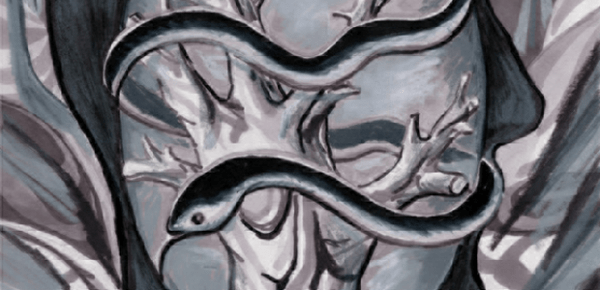
After putting myself in too many people’s shoes, and seeing the world through everyone else’s eyes for too long, I start to become a warped and weary alien to myself. I no longer recognize my own face and I need to recharge. This is when I head to my studio to sit.
I close my eyes only to be met immediately by a swarm of thoughts. I greet them politely as visitors, and let them take their leave. When things go well, eventually, the crowd of thoughts thins out and the space behind my closed eyelids becomes a still, silent theatre. Now, instead of words, images come quickly flashing across the stage. As long as I don’t imagine myself to be the playwright, but rather remain passive in my theatre seat, the show takes me deeper and deeper into a world as rich and whole as it is mercurial. Eventually I reach a place where movement and opposition are washed away for a second or an hour. Then as I work my way back from that place, I notice that my muscle are looser, my mind is less cluttered, and eyes see a little more clearly.
The Householder’s Guide to Form and Deed came to me as an outline scribbled in a notebook after one such visionary meditation session at the end of summer in 2013. I spent fall and winter drawing the 60 images contained in this little story and wrote the accompanying narrative text on Good Friday, 2014.
If you enjoy this, you may also like to read A Little World Made Cunningly, a story released by Scott David Finch in 2013.








